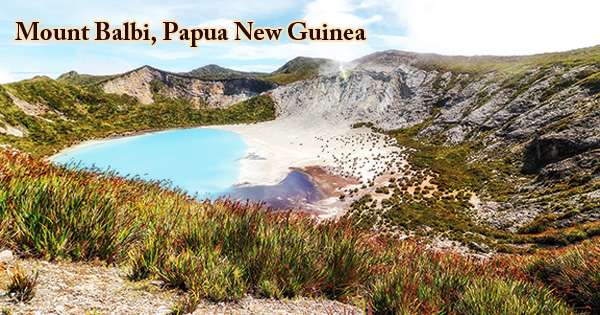One year after a fire destroyed nearly the entire watershed in southern Oregon, including riparian zone trees that had helped maintain ideal stream temperatures for the cold-water fish, the quantity of trout in the stream system showed no signs of reduction.
The study by Oregon State University provides information on how well steelhead, cutthroat, and rainbow trout can withstand the higher water temperatures that are anticipated to come along with climate change and its effects, such as an increase in the frequency, size, and severity of wildfires.
“It’s crucial that we improve our understanding of the factors that influence how fish respond to postfire changes in stream temperature,” said the study’s leader, Dana Warren, a researcher in the OSU colleges of Forestry and Agricultural Sciences.
“The loss of streamside cover during a fire can lead to substantial increases in stream temperature, but the effects of changes to stream thermal regimes on salmonid fishes can be complicated. The fish in this system proved to be quite resilient to these increased temperatures at least within the range that we saw here.”
The researchers emphasize that their results, which indicated an increase in fish populations throughout the course of the summer in their study regions, do not prove that wildfires are not a threat to trout populations.
In the study, peak water temperatures in the summertime, which regularly reached as high as 24 degrees Celsius, did not seem to have an immediate impact. However, the researchers did not, for instance, evaluate either long-term or less-than-lethal implications of water temperature rises.
“Acute mortality is important but isn’t the only impact,” Warren said. “There may be sublethal effects, like a weakened ability to grow or reproduce. Given the short-term nature of our observations, more research is needed on the mechanisms that drive fish responses to warmer water temperatures, and long-term monitoring is also needed.”
Recent studies have speculated about the potential effects of climate change on trout and salmon as summer stream temperatures gradually rise above 16 to 20 degrees Celsius. Abrupt disturbances like fire can produce rapid and substantial increases in stream temperatures that provide insights not only into how these increasingly common disturbance events affect native salmonids, but more broadly how salmonids may respond to other aspects of climate change.
Dana Warren
The 5,000-acre Hinkle Creek Paired Watershed Study area in Douglas County, which is second-growth forest land owned by Roseburg Forest Products, was the subject of the study, which was published in Ecosphere. In September 2020, the Archie Creek Fire consumed 131,542 acres in the county, including the Hinkle Creek watershed.
“The fire burned an area for which we have all this historical data on stream flow, water temperature, sediment, nutrients and fish,” said study co-author Kevin Bladon, a hydrologist in the College of Forestry. “Going back there and measuring the same parameters provides some really robust insight into the effects of wildfire.”
The Hinkle Creek project was established in the early 2000s to examine the effects of logging on entire watersheds while examining how the Oregon Forest Practices Act and contemporary logging techniques preserve forest streams during harvest operations.
For five years prior to harvest and four years following, researchers gathered information on the quantity and quality of water, fish, amphibians, and aquatic invertebrates.
For this study Bladon, Warren and collaborators at Oregon State looked at the native salmonids, cutthroat trout and steelhead/rainbow trout (steelhead are ocean-going, like salmon).
“These are ecologically, culturally and economically important species distributed across western North America,” Warren said. “Recent studies have speculated about the potential effects of climate change on trout and salmon as summer stream temperatures gradually rise above 16 to 20 degrees Celsius. Abrupt disturbances like fire can produce rapid and substantial increases in stream temperatures that provide insights not only into how these increasingly common disturbance events affect native salmonids, but more broadly how salmonids may respond to other aspects of climate change.”
As a result of the Archie Creek Fire, which destroyed the entire Hinkle Creek catchment area, including the riparian area, and burned with moderate to high intensity in three-quarters of the watershed, summer stream temperatures in 2021 routinely exceeded 22 degrees Celsius, or about 7 degrees higher than prefire conditions.
“And there were two extended periods, 10 days and six days, where stream temperatures never dropped below 16 degrees,” Bladon said.
In contrast to what scientists had predicted, fish abundances did not decrease during the summer of 2021; rather, they grew in the regions where fish counts were monitored both early and late in the season.
The researchers add that it is not unusual for trout to persist in a stream system with high temperatures after a fire. However, the majority of research with those kinds of conclusions are from places that are generally warmer and have more frequent fires than the western Cascades.
“Although temperatures increased beyond what’s considered the salmonids’ optimal threshold in the Cascades, there were no classically warm-warm species present, so competition from them was not an issue,” Warren said.
“A combination of other factors could also have contributed to the persistence of salmonids: high abundance of cooler microhabitats created by groundwater discharge; physiological recovery at night when temperatures were cooler; and an increase in food availability. More investigation is needed to know for sure.”
The National Council for Air and Stream Improvement, the Oregon Forest Industries Council, Roseburg Forest Products and the OSU Fish and Wildlife Habitat in Managed Forests program supported this research.
Allison Swartz of the OSU College of Forestry and David Roon of the colleges of Forestry and Agricultural Sciences also collaborated on the study.
















